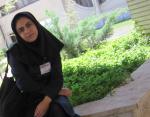


Theme
Mobile Learning
Category
Case Studies
INSTITUTION
Jahrom University of medical sciences

As a result, In attention to the effectiveness of mobile based learning on knowledge and consent of faculties about this method. We recommended using this method in service training.
mobile technology has made the effective possibility of using technology to support education and learning in universities and colleges in a way that it makes better chance of e-learning. The aim of this study is to make a mobile-based educational design in new lecturers' workshop plans and investigate its effectiveness from their points of view.
All new faculty members include teaching workshops participate in this program.T he main program that sent to faculties was lesson plan that was taught in two days, conclude 10 text messages that design by m-learning process to transform basic information about this content. Data gattering was from questionnaire. Pre test – post test faculty knowledge assessed by valid and reliable questionnaire conclude 8 multiple choice question. The effectiveness of this program by questionnaire about advantage and disadvantage of this method was assessed by 10 question on 4 point likeret scale
M-learning development and effective use of digital technologies to support learning and teaching in universities and colleges, so that staff benefit from e-learning
Results showed that m-learning effect to promote faculty knowledge ( p= 0.03). Other result showded that the highest average rate of advantage were availability( 2/2 ± 0/83 ),comprehensiveness( 2/35± 0/71 ) and easy to used( 2/30 ± 0/73) and Satisfaction was also high average rate(2/90± 0/71 ) .
We are really thankful to all students who participated in the study, also statistics department for helping in designing the study and also the development center for cooperation in designing and sending short messages.
1-http://www.elearning-center.co.ulc.[ online ] , 31 May 2012 , London, United Kingdom .
2-Bahadori H, Kamgar Haghighi M, Agah SH, Learning based on mobile phone.2009.NehzatpouyaPublications.Tehran.
3-Keegan DC.The arrival of mobile learning ILTA annual conference. 2006, available from www.ericsson.com/ericsson/corpinfo/.../edtech_200_des_keegan.pdf
4-Sharples M , Taylor J , Vavoula G. A theory of learning for the mobile age. In R. Andrews & C. Haythornthwaite (Eds.), The Sage handbook of e-learning research (pp. 221-247). Sage: London.2007.
5-Kukulska-Hulme A . Mobile usability in educational context: What have we learnt? International Review of Research in Open and Distance Learning 2007, 8(2), 1-16.
6-Wang M , Shen R , Novak D , Pan X. The impact of mobile learning on students' learning behaviours and performance: Report from a large blended classroom. British Journal of Educational Technology 2009, 40(4), 673-695.
7-Walton G, Childs S, Blenkisopp E. using mobile technologies to give health students access to learning resources in UK community setting Health Info ilibr J. 2006; 22(supple2): 51-56.
8-Kan strop AM, boye N, Nhr C. Designing m-learning for junionregistrars a ctivrion of a theoretical model of clinical knowledge. Stud Health Technol inform 2007;129(2):1372-6.
9- Ismail I, Gunasegaran T, Koh P P , Idrus R M. Satisfaction of Distance Learners towards Mobile Learning in the Universiti Sains Malaysia. Malaysian Journal of Educational Technology 2010; 10(2): 47-54.
10-Oshea N. Use of sms messaging at Institute of technology, Tallaght.Institute of Technology Tallaght, Dublin 2005.
11-O'shea, N. Use of SMS messaging at Institute of Technology.The American Association of Colleges of Nursing.Faculty shortages in baccalaureate and Graduate Nursing Program. 14 Apr 2011, available from http://www.aacn.nche.edu/publications/whitepapers/facultyshortages.htm
12-Green H, Hannon, C. Their space: Education for a digital generation. London: DEMOS. 2007. Http://www.demos.co.uk/publications.the
13-Green H, Facer, K., Rudd, T., Dillon, P., & Humphreys, P.Personalisation and Digital Technologies. 2005. http://Bristol: Futurelab.org.uk/research/personalization/repo
14-Hartnell-Young E, VetereF.Form digital storytelling to eportfolio development: mobile devices supporting learners. In Finger, G., Russel, G., Jamieson-proctor, R., &Russel, N Transforming Learning with ICT: Making IT Happen.2006:234-236. French's Forest NSW: Pearson Education Australia.
15-McFarlane A, Roche N, TriggsP.Mobile learning: Research findings. Report for Becta Coventry, UK.[ online ] 2007. Available from http://partners.becta.org.uk/index.php?section=rh&catcode=_re_rp_02&.
16-Papzan A, Soleimani A, Comparison of the effect of two educational Methods through mobile and speech on learners' learning rate.It & Communication in Educational Sciences.Autumn 2010 [ persion].
17-Hartnell-Young E, Heym, N. How mobile phones help learning in secondary schools. Learning Sciences Research Institute University of Nottingham. 2008, Retrieved from http://www.isri.nottingham.ac.uk/ehy/LSRfinalreport.pdf
18-Attewell, J.From research and development to mobile learning: Tools for education and training providers and their learner. The International Review of Research in Open and Distance Learning 2006,7(3),Availble from www.irrodl.org.
20-Mc Conatha D, Matt P, Michael J L,. Mobile learning in the classroom: An empirical assessment of a new tool for students and teachers. The Turkish Online Journal of Educational Technoligy 2005, TOJET, 7(3), 2.
21-Wang L. Effectiveness of text-based mobile learning applications: Case studies in tertiary education 2009. Unpublished master's thesis, University of Massey.
22-Karimi M, Tavakol KH, Alavi M. Comparison of two educational methods based on lecturing and group discussion. Hamedan Scientific journal of Nursing and Midwifery, 2006:15-20[ persion].
 Send Email
Send Email